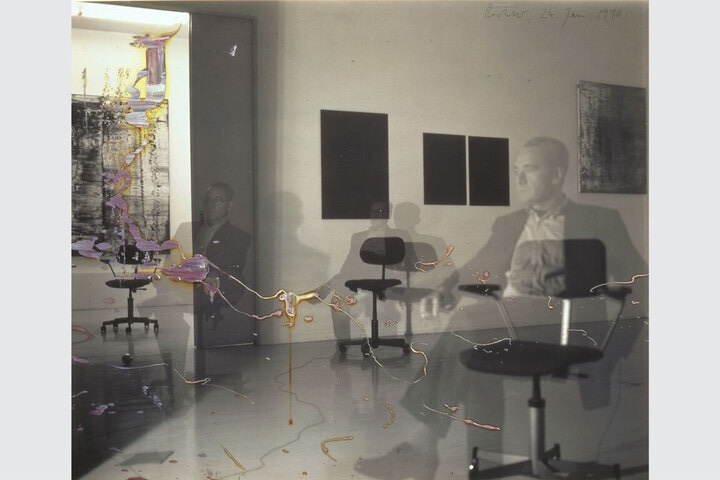Gerhard Richter was born the first child of Horst and Hildegard Richter in Dresden, Germany, a year before Adolf Hitler came to power in 1933 (a sister, Gisela, was four years his junior). His father was a secondary school teacher and his mother a bookseller who played piano. In 1935 Horst moved the family to Reichenau, in present-day Poland, to accept a job there. At the outbreak of World War II, in 1939, he was drafted into the Wehrmacht, eventually becoming an Allied POW held captive until the war’s end. Released in 1946, he returned to his family, which in his absence had relocated to a village near the Czech border called Waltersdorf.
Horst had been compelled to join the Nazi Party to find work within the Third Reich’s educational system, and even then he’d had to settle for a post in a provincial backwater. This turned out be advantageous for Richter’s family, as Reichenau’s rural isolation insulated them from the prying eyes of the Gestapo and, early on at least, from the ravages of the war. Indeed, Richter recalled family life as “simple, orderly, structured—mother playing the piano and father earning money.”
But like the lives of all Germans at the time, Richter’s childhood was deformed by Hitler’s regime. Upon turning 10, he was required to join the Deutsche Jungvolk—the junior branch of the Hitler Youth—while the war exacted a personal cost on his family. Two of his uncles died at the front, including one, Rudi, who was immortalized in one of Richter’s blurred, monochromatic paintings from the mid-1960s (more to come on these as well). He likewise commemorated his aunt Marianne, who suffered from schizophrenia. Per Nazi policy, she was forcibly sterilized and committed to a psychiatric hospital. There she was starved to death as part of the Reich’s notorious T4 euthanasia program, which systematically murdered the disabled because they were deemed unworthy of life. She was dumped in a mass grave along with 8,000 other T4 victims.
More chillingly, Richter’s future father-in-law, Heinrich Eufinger, was an SS doctor assigned to the same hospital where Marianne was confined to administer sterilization procedures like the one performed on her—which he may have carried out, though that remains unproved. Eufinger appears in Richter’s Family at the Seaside (1964), smiling alongside his wife and children.
Richter was unaware of these details when he painted Marianne in 1965, as a portrait taken form a snapshot of himself as an infant sitting on her lap when she was 14. He found out only after the journalist Jürgen Schreiber uncovered the facts for his 2005 biography of Richter, Ein Maler aus Deutschland (A Painter from Germany). Still, when Richter was a boy, Marianne was treated as a cautionary figure, with his mother discouraging him from trouble by saying, “Don’t do that or you’ll end up like Aunt Marianne.”
Richter’s hometown of Dresden was devasted by Britain’s RAF in February 1945. While not present at the time, Richter was deeply affected by its destruction, and the bombing, too, would find its way into his work—most explicitly in 14. Feb. 45 (2002), an appropriated and retouched aerial reconnaissance photo of the ruined city of Cologne (bombed on the same day as Dresden) that testifies to how it still haunted him six decades later.
At the war’s end Richter’s family found themselves inside the Soviet occupation zone, which became Communist East Germany, a rump nation where one totalitarian regime was exchanged for another. Richter would remain there until his escape West in 1961.
